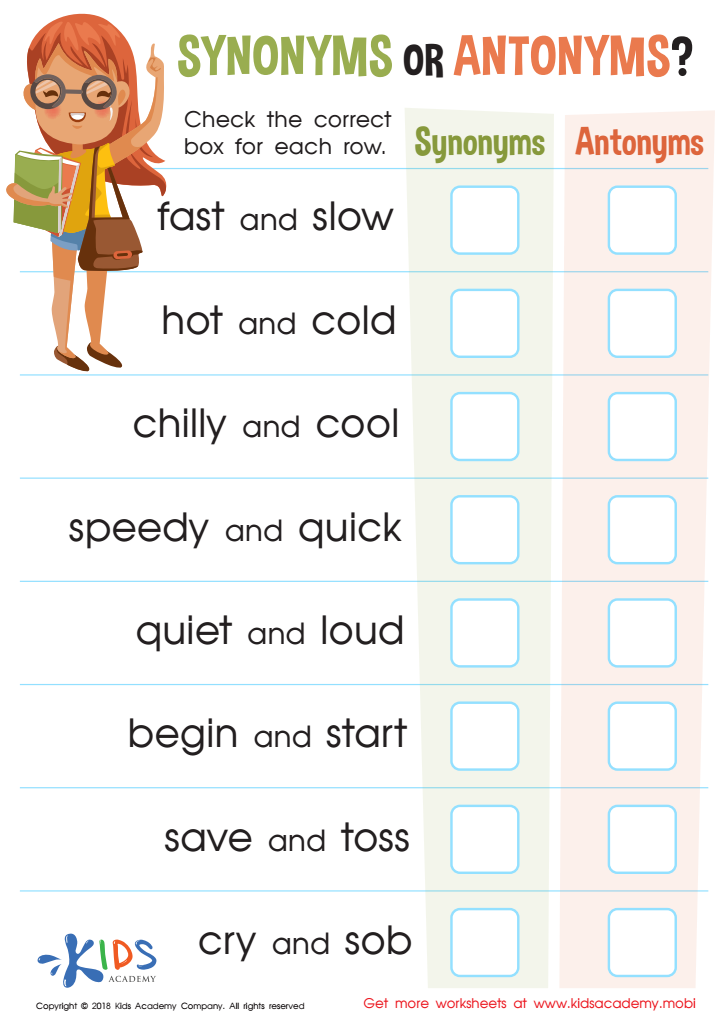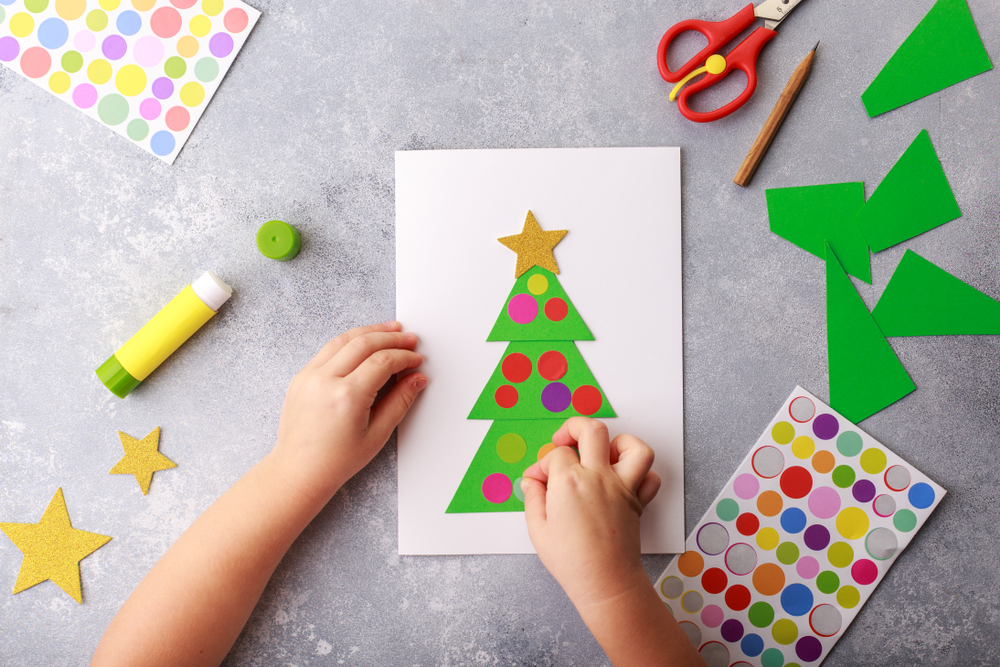Understand synonym/antonym concept Worksheets for Kids
1 filtered results
-
From - To


Synonyms or Antonyms: Assessment Worksheet
Question/Answer
How does the mastery of the Understand synonym/antonym concept skill affect a student's performance at an early age?
Mastery of the Understand synonym/antonym concept skill at an early age enhances a student's vocabulary, reading comprehension, and verbal and written expression. It aids in their ability to decipher context, make finer distinctions in meaning, and enrich their communication skills. This foundational skill contributes significantly to overall academic success and linguistic proficiency.
How to test a Grade 3 student’s Understand synonym/antonym concept skills?
To test a Grade 3 student's understanding of synonyms and antonyms, administer a short quiz with two sections. In the first section, list words and ask students to write a synonym for each. In the second section, do the same for antonyms. This format directly assesses their ability to recognize words with similar and opposite meanings.
What does the Understand synonym/antonym concept skill mean when it comes to Grade 3 Building Vocabulary learning?
The "Understand synonym/antonym concept" skill in Grade 3 Building Vocabulary learning involves teaching students to recognize and comprehend words that have similar meanings (synonyms) and opposite meanings (antonyms). This helps children expand their vocabulary, improve their comprehension, and express themselves more precisely and variably in both oral and written communication.
 Assign to the classroom
Assign to the classroom












